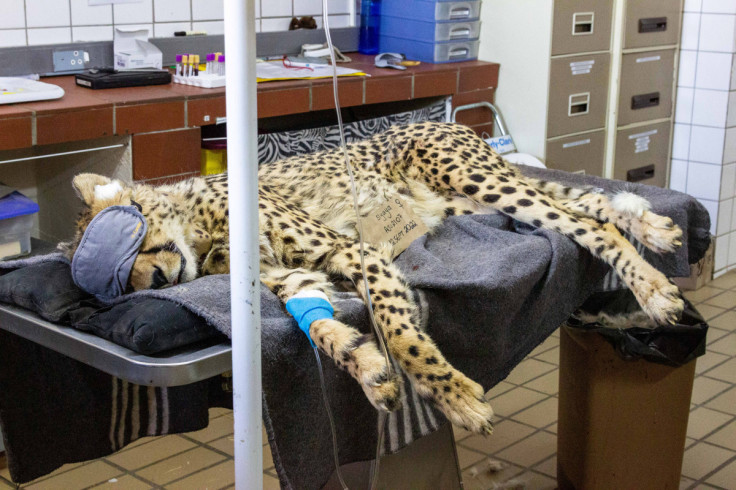Seventh cheetah dies in India's national park possibly due to fight while attempting to mate
The male African cheetah named Tejas was found with injuries to his neck on Tuesday, and succumbed to them hours later.

Last year, India embarked on a cheetah conservation drive. It imported several cheetahs from South Africa and Namibia to reintroduce them into the wild. Unfortunately, the project has not been going as planned.
The country has reported the seventh cheetah death in Kuno National Park in the last three months. The male African cheetah named Tejas was found with injuries to his neck on Tuesday, and succumbed to them hours later.
According to local media reports, the cheetah died from suspected infighting. Tejas was brought to India from South Africa in February of this year. The principal chief conservator of forests, JS Chauhan, said that a female cheetah who was brought from Namibia to India earlier this year may have been the cause of Tejas's death.
"The cheetah suffered a traumatic shock and died shortly after the female inflicted injuries on his neck, which were found to be superficial and not deep enough to cause his death," Chauhan told The Independent.
Wild cheetahs were never a viable idea for India's geography, to begin with. A completely ill-conceived project. They are dying one by one. https://t.co/D2ey15Pkt3
— Sandeep Manudhane (@sandeep_PT) July 11, 2023
He further stated that the injury sustained in the attack could not have been the only reason for his death and said that the cheetah was already ailing from internal infections.
"There was accumulation of chicken fat and coagulated blood was also found in the aorta and auricle of his heart. His kidney appeared pulpy and emphysema and white coloured nodules were found in spleen," he added.
It is also not clear why the female cheetah attacked Tejas. "Circumstances are unclear, we cannot say with certainty that the female attacked Tejas to stop mating," explained Chauhan.
The Ambitious Project Cheetah and obstacles:
Big cats like cheetahs, tigers, snow leopards, and leopards are now facing many threats, mostly caused by human activities. The numbers have declined from an estimated 15,000 adults in 1975 to a current global population of less than 7,000 individuals.
Wild cheetah numbers in Asia have registered a continuous decline in the past decades. Cheetahs went extinct in India more than 70 years ago. It became extinct due to the loss of its habitat, hunting, and a lack of prey.
#BREAKING | PM Modi releases cheetah in their new home Kuno National Park
— Republic (@republic) September 17, 2022
Watch - https://t.co/fyBXoa0vac pic.twitter.com/4MXGMmuzMA
As many as eight cheetahs were translocated from Namibia to India last year, while 12 were brought in from South Africa in February this year. With the latest death, a total of seven cheetahs have already died at the national park.
However, the deaths do not exactly come as a shock since experts had warned that the mortality rate of cheetahs was expected to spike.
In the wild, cheetah cubs have a survival rate of only 10%. Experts have also attributed the deaths to the limited space available in the park, as cheetahs require larger playing fields. They need large swaths of habitat to survive. Smaller and more scattered habitats lead to human-animal conflict and leave them vulnerable.
According to a study by the Convention on International Trade in Endangered Species (CITES), the increasing trend of smuggling wild cheetahs from the Horn of Africa to the Middle East and selling them as exotic pets is also causing a dramatic decline in the number of felines.
The International Union for Conservation of Nature (IUCN) lists all cheetah subspecies as vulnerable, except the Northwest African and Asiatic cheetahs, which are critically endangered.
According to IUCN Red List estimates, a quarter of mammals are also at risk of extinction. A study from the Norwegian University of Science and Technology revealed that more than half of species—about which there is not much data available—face the threat of extinction.
Losing these majestic predators would have a devastating impact on our ecosystem. Wildlife experts suggest reducing the use of fossil fuels, eating less meat, and avoiding products made from animal body parts if we wish to save these creatures.
© Copyright IBTimes 2024. All rights reserved.






